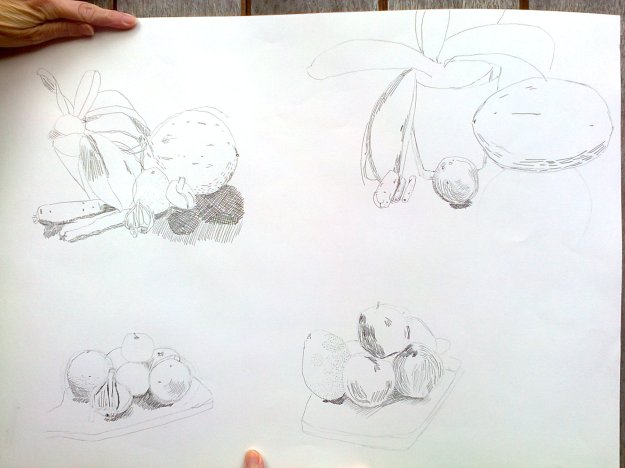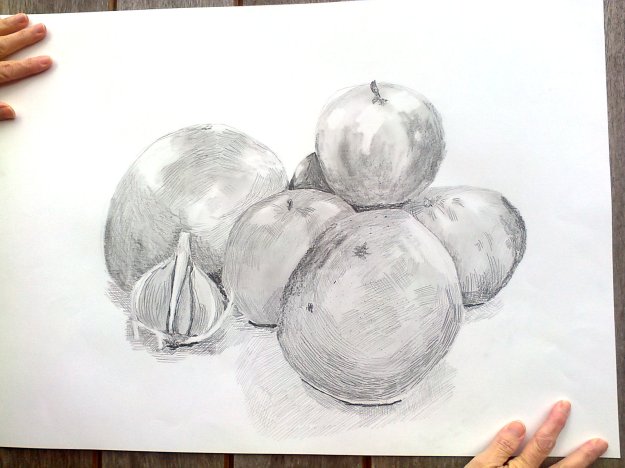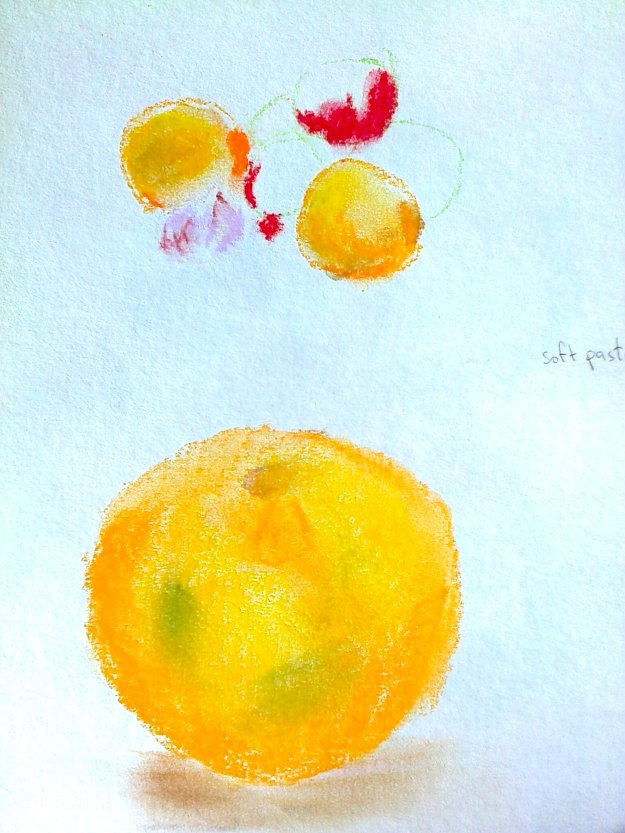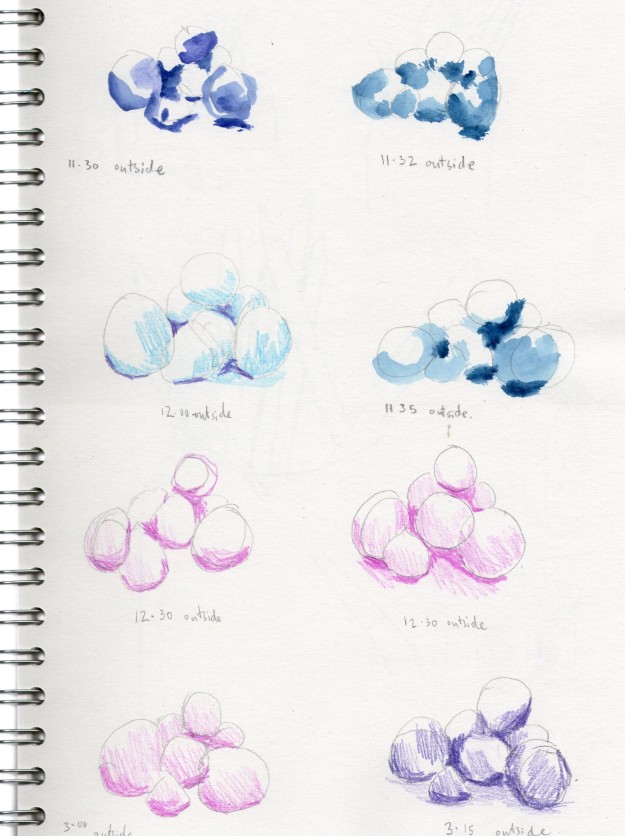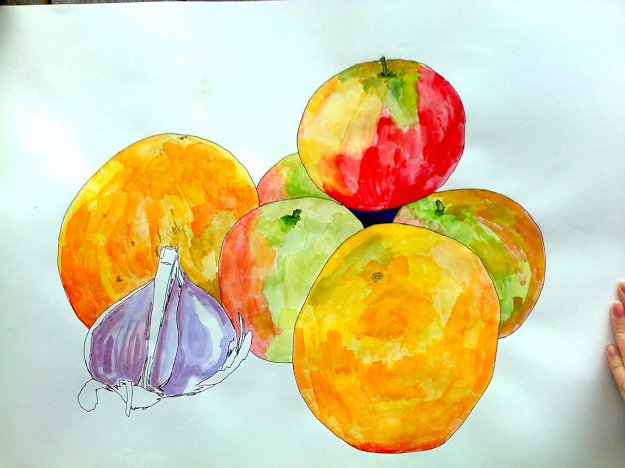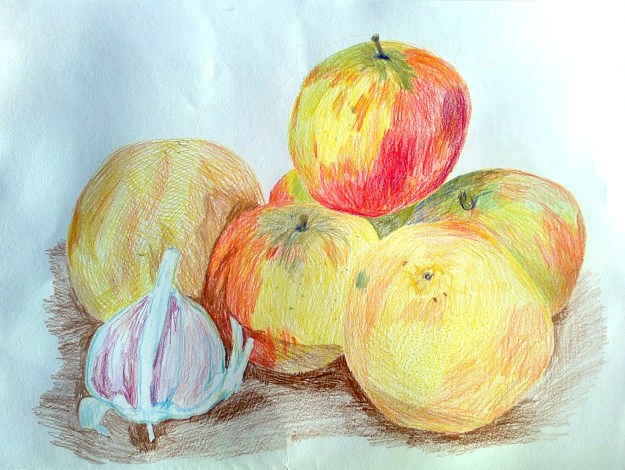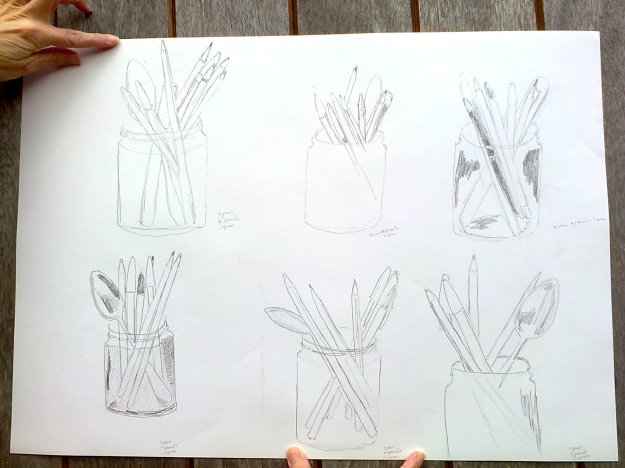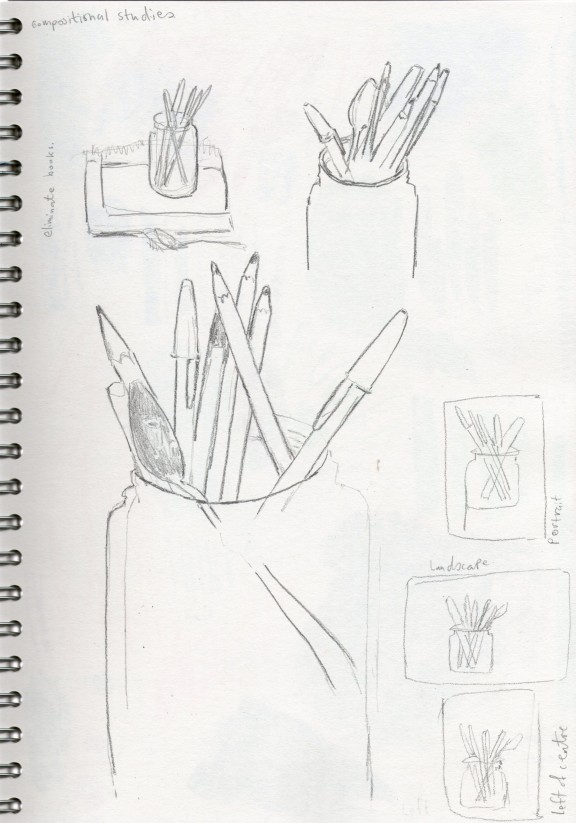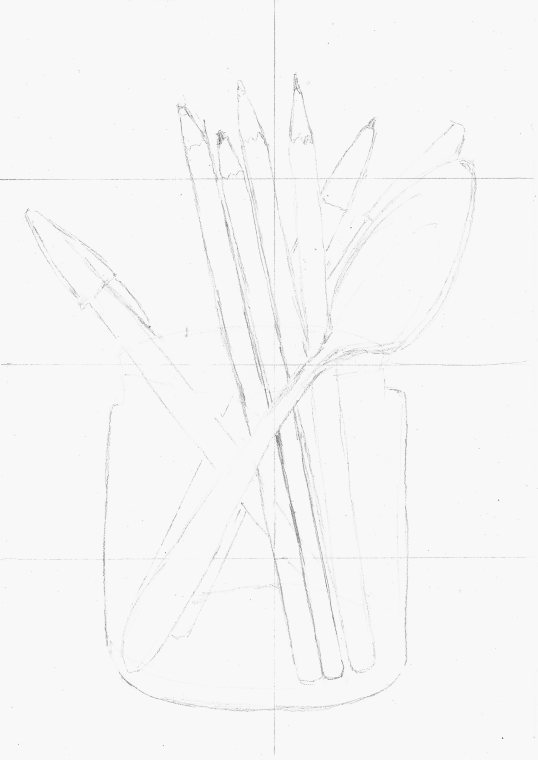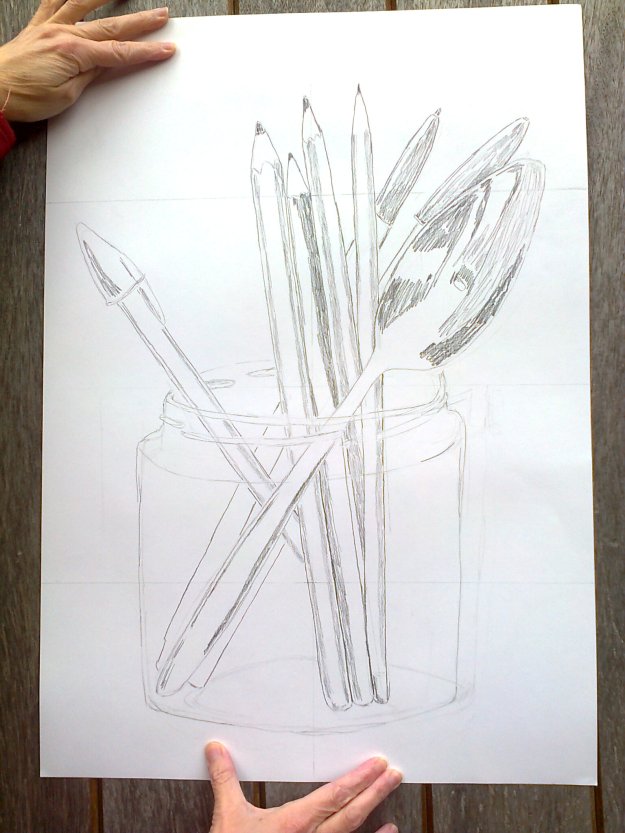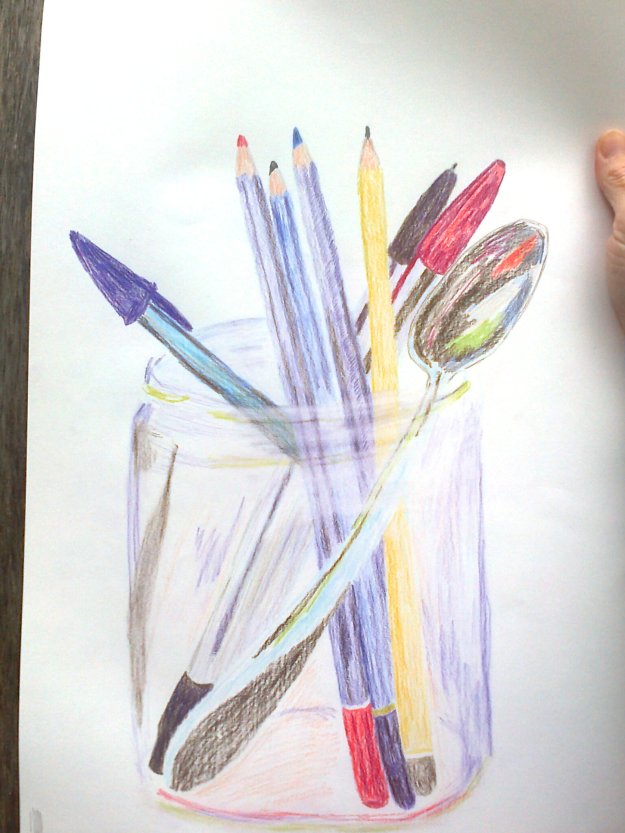Please click on images to view them at full size.
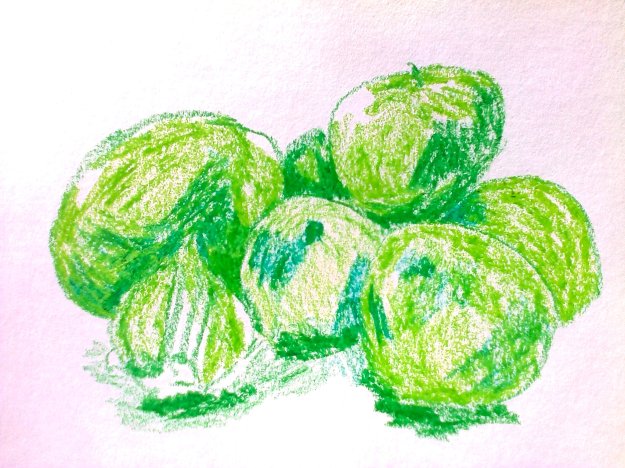
Colour materials test (two of three ) showing possible variations of media. Oil pastels. (In A4 sketchbook)
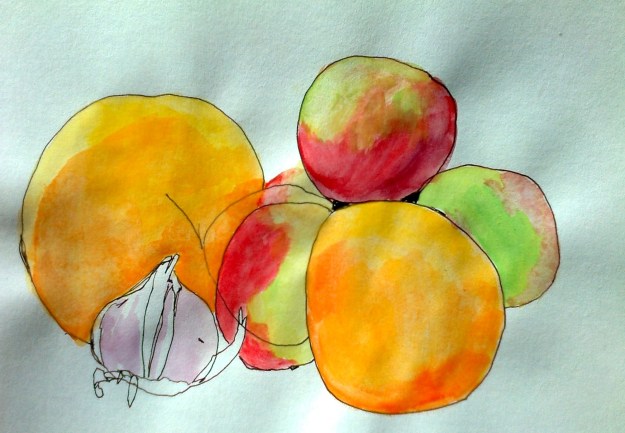
Colour materials test (three of three) to show variety of media. Watercolour and ink. (In A4 sketchbook)
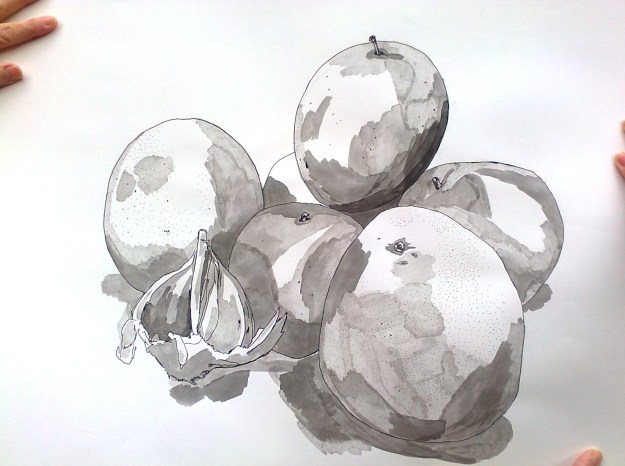
Finished drawing – A2 – Still life study of natural forms, using acrylic ink, dip pen, water and brushes.
Did you do enough preliminary work before starting work on your final pieces?
Yes, I did. I thoroughly examined my still lives in a range of media and from different view points. I looked at composition and I eliminated objects which I thought were not suitable for the final study. The quantity of pens and pencils was reduced during my compositional studies, because the images looked too busy.
Did your large drawings give an accurate interpretation of the still life groups? If not, what went wrong?
My natural forms still life gave an accurate interpretation of the physical. Some of my made objects still life drawings look elongated. I think this could be because the drawing was not accurately scaled up, or possibly because the original study used to scale up was not correctly drawn. I think the pencils and pens were sometimes longer and thinner than was right.
Did you make a good selection of objects or did you try to include too much? Would you change the arrangements of objects if you were to start again?
I am very happy with my selection of objects. I don’t think I would want to change the arrangement if I were to start again, because I am pleased with these drawings. But if I were to take this exercise further I think I would definitely like to see how the drawings would turn out if I made the composition busier. Or if I worked with more experimental techniques explored in the mark making exercises. The spoon was difficult to work with, as it kept slipping out of position. Eventually I kept it in place using Blu-tak. If I began again, I think I would do that in the first place.
Do your drawings fit well on the paper or could they be improved by working on a larger sheet of paper?
My images fit well on the paper.
Did you have problems with drawing or find hatching too difficult?
In my pencil drawing of my natural forms still life I used hatching, smudging and stippling make all the different fruit textures. In my other drawings I was not sure of the best times to use hatching, and so there is not much hatching in my assignment drawings. I think I need to continue to practice drawing with hatching, so that it becomes more natural and instinctive to use in every drawing.
